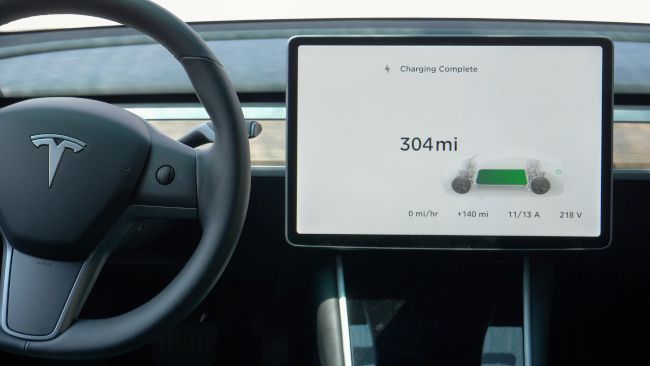Quick Links
You may be worried that, much like the battery in your smartphone or laptop, an electric vehicle (EV)'s battery will lose capacity after just a couple of years of use. The good news is that the vast majority of Tesla batteries last far longer than that, and we'll explain why.
You can approach the question of battery life in two ways: How long is the lifetime of the battery, and how long does a Tesla battery last on a single charge? We'll tackle the former question first.
A Tesla Battery Should Last Decades
Tesla (and Elon Musk) claims its EV batteries can last between 300,000 and 400,000 miles before they die and need to be replaced. Data collected by research firm NimbleFins seems to back this up --- a study of 557 Tesla vehicles conducted by the company showed an average of 90% battery capacity even with 150,000 miles on the odometer.
Most people drive around 40 miles per day and about 273 miles per week, according to auto insurance writer Liz Jenson. At that pace, it would take someone between 21 and 35 years to put their Tesla's battery through enough cycles that it needed a replacement. Driving habits obviously vary from person to person so this is a ballpark figure, but it's still a long time.
That's not to say Teslas never need battery replacement. If the lithium-ion battery pack is defective it may not be able to hold a charge or lose charge capacity at a much faster rate than normal. They can also catch fire with pretty catastrophic results if the battery sustains damage that causes a short, or has a defect that causes the battery to go into thermal runaway. But those defects are rare and almost always covered by the manufacturer's warranty.
Tesla isn't the exception here, either. Most electric car manufacturers cover their batteries for 8-10 years and 100,000-200,000 miles.
How Many Miles a Tesla Battery Can Get on a Single Charge
A car's range, or how far you can go on a single charge, is the more day-to-day concern among Tesla drivers and varies by what model you drive. As of this writing, all Tesla models will get you well over 200 miles on a single charge, and the longer-range models can go over 300.
Battery capacity plus the efficiency of the motor and drivetrain are what create this difference in range between Tesla models. The Model 3 Standard Range, for example, is at the bottom end of the spectrum with about 267 miles per charge while the Model S is estimated to get 375 miles or more. The newest version of the Model S has a more efficient drivetrain and a larger battery, giving it a longer range.
Teslas also have larger battery packs than other electric cars with shorter ranges on the more affordable end of the spectrum. The Model S Plaid, for example, has a usable battery capacity of around 95kWh battery while the Nissan Leaf has a 39kWh battery pack.
Looking back at the 40-mile-per-day average driving figure, a single charge is more than adequate to get around. That range covers even commuters who travel twice that distance, and chances are they'll also have a place to charge their vehicle while it's parked at their job or a charging station nearby.
Driving habits also affect mileage. Prolonged highway driving drains EV batteries more quickly no matter what model you drive, and extreme weather conditions require additional power for climate control and battery management that also take their toll. Calendar aging also gradually diminishes charge capacity over a battery's lifetime, but won't take a significant toll until near the end of its life.
Long-distance trips still require some planning but Tesla charging infrastructure has become pretty plentiful in the U.S., so daily trips shouldn't be a worry. The bottom line is that even older Tesla batteries are fairly reliable and will likely last for years to come --- probably as long as you'd end up driving a traditional gas-powered car.


